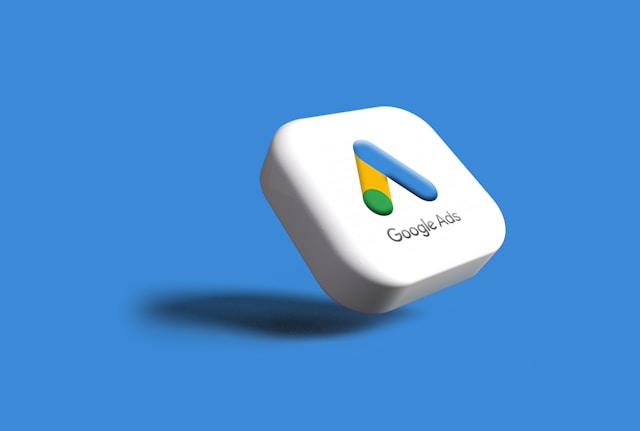Picking where to spend your ad dollars is rough. Google Ads and Facebook Ads both have their perks, but the best choice really depends on your goals and who you’re trying to reach.
For most businesses in 2025, Google Ads just gets you more serious leads and faster ROI. Facebook Ads? They’re awesome for getting your name out there and building a crowd.
If you know which fits your needs, you’ll avoid wasting time and cash.
Let’s dig into the differences so you can figure out if you should chase search intent or social presence. That choice can make or break your marketing.
Understanding Google Ads and Facebook Ads
Google Ads and Facebook Ads are totally different beasts. Both matter in digital marketing, but they target people in their own ways.
Each one shapes your ad strategy depending on what you want and how your customers act. Their approach to reach, data, and ad formats keeps shifting as the digital scene changes.
How Each Advertising Platform Works
Google Ads uses a pay-per-click model and is all about intent-based search marketing. Your ads show up when people type stuff into Google or browse sites in its Display Network.
This setup is killer for catching people who are actually hunting for what you sell. It’s not about hoping someone stumbles across your ad, it’s about being right there when they want you.
Facebook Ads, though, leans on social stuff and crazy-detailed user data. Your ads pop up inside Facebook, Instagram, and Messenger.
You target people based on interests, habits, and connections. It’s more about getting noticed and building relationships than nabbing instant buyers.
Key Differences in Online Advertising
Google Ads grabs folks with clear intent. If someone’s searching, your ad shows up. That’s why it’s great for conversions.
Facebook Ads hit people while they’re just scrolling, so you’re focusing more on being seen and building a vibe over time. The magic is in all the demographic and behavior data you can slice and dice.
Google’s clicks usually cost more but convert better if you want sales right now. Facebook clicks are cheaper, but you’ve got to make your ads pop since nobody’s hunting for you.
| Feature | Google Ads | Facebook Ads |
|---|---|---|
| Primary User Action | Search-driven intent | Passive browsing |
| Targeting | Keywords, intent | Demographics, interests, behaviour |
| Best For | Direct conversions | Brand awareness and engagement |
| Cost | Higher CPC | Lower CPC |
The Evolving Digital Landscape in 2025
In 2025, digital marketing is all about data privacy, AI, and mixing channels. Google’s made privacy tighter and uses AI to make ads smarter and bidding easier.
Facebook’s pushing AI too, with tools that build and retarget ads automatically. They’re trying to keep things personal even with tougher privacy rules.
Now, both work better with other channels, so you kinda have to use both intent-based search and social discovery if you want to win. It’s not easy, but that’s where things are headed.
Target Audience and Targeting Capabilities
Google Ads and Facebook Ads both let you laser-focus on who you want, but they do it in totally different ways. If you don’t get these differences, you’ll probably waste your budget.
Demographic Targeting and User Intent
Google Ads mostly targets by search intent. When someone types something in, Google tries to show ads that match what they want.
You’ll reach people actually looking for your stuff, so age or gender isn’t as big a deal, but you can still tweak those if you want.
Facebook Ads, though, is all about demographics and user data. You can filter by age, gender, location, education, relationship status, whatever.
It’s perfect for brands trying to get noticed by certain groups, even if those people aren’t searching for anything. You can nudge them just because of who they are.
Targeting Method and Ad Targeting Options
Google lets you target by keywords, topics, placements, and audience segments. It’s all about what people search, what they watch, or what sites they visit.
Facebook does it with profile data and behavior, interests, or even what device someone uses. You can stack filters to get super specific.
Audience Segments and Lifestyle Brands
Facebook is amazing for lifestyle brands that want to connect with people based on what they like and do. Got a fitness brand? Target folks into health, wellness, or who follow certain pages.
Google, on the other hand, builds segments based on what people search for. If you want to catch someone searching for “best running shoes,” Google’s your best bet.
Lookalike Audiences and Custom Audiences
Facebook’s Lookalike Audiences are gold. You can reach new people who act like your current customers, which makes scaling up way easier.
Custom Audiences let you retarget people who already know you, using your email lists or website visitors. Mix that with behavior targeting and you get pretty good results.
Google Ads has Customer Match, so you can target or exclude people from your own lists. But honestly, Facebook does the “find more people like these” thing better.
Ad Formats, Creative Options, and Engagement
Google Ads and Facebook Ads give you different creative tools. They each have their own ad formats and ways to grab attention, and that changes how people interact with your ads.
Diverse Ad Formats: Image, Video, and Text
Google Ads has a bunch of formats: text ads in search, image ads on the Display Network, and video ads on YouTube. The text ads are short and to the point, which works for people searching for something specific.
Facebook Ads is all about images and videos right in your feed or stories. If you want to stand out visually, Facebook’s where it’s at. Both platforms have responsive ads that mix things up automatically.
| Platform | Key Ad Formats |
|---|---|
| Google Ads | Text ads, Image display ads, Video ads (YouTube) |
| Facebook Ads | Image ads, Video ads, Carousel ads, Collection ads, Stories |
Visual Storytelling for E-Commerce and Service Businesses
Facebook’s ad formats are perfect for e-commerce brands needing to show off products. Carousel and collection ads let you display a bunch of stuff at once, making it easy for people to shop right there.
If you’re selling services, video ads can explain what you do and build trust. Google does video too, but it’s mostly about catching intent with search or showing off on YouTube.
With Facebook’s feed and Stories, you can grab attention with real-time, eye-catching content.
Interactive Creative Options: Carousel, Collection, and Stories
Facebook’s carousel ads let you show up to 10 images or videos in one go. You can highlight different products or features all at once.
Collection ads mix video or images with a product catalog, making it easy for people to buy without ever leaving Facebook. Stories are huge for younger folks, giving you full-screen, short-lived content that actually gets clicked.
Google Ads doesn’t have as many interactive options in search, but their display and video ads help with retargeting. Still, it’s less about immediate user interaction.
Ad Fatigue and Engaging Users
Ad fatigue is real. When people see the same ad over and over, they just tune out and your costs go up. Facebook’s algorithm pushes you to keep your ads fresh and test new stuff all the time.
Google Ads handles this by rotating ads and using broad keyword targeting. You don’t get as much visual fatigue with text ads, but you still need to update things for display and video.
You’ve got to watch your engagement and audience overlap. Switching up your ads and formats keeps things interesting and makes your campaigns last longer.
Performance, ROI, and Budget Considerations
Choosing Google Ads or Facebook Ads really comes down to how much you want to spend, what kind of results you want, and how fast you want to see them.
Cost Comparison and Budget Allocation
Google Ads usually eats up more of your budget because of all the competition, especially in hot industries. The cost-per-click (CPC) is higher, but you’re getting leads who are ready to buy.
Facebook Ads are cheaper, so you can test and scale without blowing your budget. If you don’t have much to spend, Facebook’s a good place to start.
Google’s network needs more cash upfront, but you get high-intent traffic faster. You’ve got to plan your budget based on whether you want quick results or you’re playing the long game.
Cost-Per-Click (CPC), Conversions, and Return on Ad Spend (ROAS)
Google’s CPC is usually $1-$2 but can be way higher depending on your industry. Facebook’s often under a buck, perfect for getting your brand out there.
But don’t get fooled by cheap clicks. Google usually brings in more conversions if your goal is sales, since people are searching with their wallets out. That means better ROAS for stuff like e-commerce or urgent services.
Facebook is better at warming up leads over time. You might see a slower but steadier ROI since people get familiar with your brand first.
| Metric | Google Ads | Facebook Ads |
|---|---|---|
| Average CPC | $1 – $2+ | Below $1 |
| Best for Conversion Intent | High | Medium |
| ROAS Timing | Immediate to short-term | Medium to long-term |
Conversion Rates and Measuring Effectiveness
Google Ads usually delivers higher conversion rates, often 3-5% or more if you set things up right. Facebook’s rates are lower, maybe 1-2%, and depend a lot on your creative and targeting.
You’ve got to track results closely on both. Google’s search data gives you quick feedback on leads. Facebook’s pixel helps you follow people over longer buying journeys.
Test your ads and tweak them based on what’s working. Whether you go with Google or Facebook depends on if you want fast conversions or you’re okay with building things up slowly.
Strategy and Choosing the Right Platform
Picking the right ad platform means knowing your main goals and where your customers are in their journey. Think about whether you need high-intent traffic, want to boost your brand, or need to retarget and collect leads.
Business Goals and Advertising Strategy
When you set up an advertising strategy, you really have to start with clear goals. Are you trying to boost sales, push an event, or just get your brand out there?
Google Ads is awesome if you want to catch people who are ready to buy or ask about your services. B2B companies usually get better ROI here since you can go after people by keywords and intent, which feels way more direct.
Facebook Ads is where you go if you want to tell your story and get people to notice you. It’s perfect for reaching a lot of people and starting relationships early in the customer journey.
Honestly, it comes down to where your users are and what you’re trying to do at each step. Pick the platform that fits those moments best, don’t overthink it.
High-Intent Traffic vs Brand Awareness
Google Ads grabs high-intent traffic from search. People on Google are usually looking for something specific, so it’s great for services, shopping ads, and getting direct sales.
You can target by keywords and what people want right now, so you get leads that are actually worth something.
Facebook Ads is way better for brand awareness and getting on people’s radar. Your ads show up across Facebook, Instagram, Messenger, you name it.
It’s all about demographics and interests, so you can hit people before they even know they want you. Google Display Network tries to do this too, but honestly, it’s not as strong unless you’re just retargeting.
| Aspect | Google Ads | Facebook Ads |
|---|---|---|
| Traffic Type | High-intent, search-driven | Awareness, interest-driven |
| Targeting Focus | Keywords, user intent | Demographics, interests |
| Ideal Use | Direct conversions, B2B | Brand storytelling, broad reach |
Retargeting, Lead Generation, and Loyalty
Both Google and Facebook offer retargeting, but they do it differently. Google Ads lets you go after people who are already searching for your stuff, so you’re just giving them a nudge.
Facebook’s retargeting is more about staying in front of people wherever they are online. It’s killer for lead generation and loyalty because you can personalise ads based on what people do and like.
Lead gen is super easy on Facebook since you can use built-in forms. It’s also great for loyalty, since you can make lookalike audiences and keep talking to people who already engaged with you.
Combining Google Ads and Facebook Ads
If you use both, you get the best of both worlds. Google Ads brings in the hot leads, Facebook keeps your brand alive and builds relationships.
Testing both platforms helps you see where people come in and lets you tweak your spending. For example, Google Shopping Ads can pull in sales, while Facebook keeps your customers learning and coming back.
When you use both, your retargeting just gets better. You can reach people on more channels with messages that actually matter to them.
Honestly, splitting your budget makes sense. Use Google to grab demand and Facebook to create it. That’s just how people behave these days, especially in 2025.
Analytics, Insights, and Final Thoughts
Both Google and Facebook give you loads of analytics, but they’re totally different in how useful they are. What works best depends on how you look at the data and who you’re actually targeting, especially if you’re in Australia.
Leveraging Analytics for Better Results
Google Ads has detailed conversion tracking and different ways to see where your customers come from. You can hook it up with Google Analytics and get all the numbers, clicks, impressions, bounce rates, ROI, you name it.
If you’re into data and want to optimise every penny, you’ll love it.
Facebook Ads gives you crazy good demographic and behaviour info. You can break down your audience by age, location, interests, even what device they use.
If your goal is awareness or engagement, this makes targeting so much easier. Google’s search intent data and Facebook’s behaviour signals just work well together if you ask me.
Choosing for Small Businesses and Niche Services
Small businesses usually get more out of Facebook Ads, especially if they want to target local groups or specific interests. It’s cheaper and easier to set up, and the audience network works well for niche services that need social proof or visuals.
Google Ads costs more, but it wins if you need quick results, like trades or emergency services. It catches people when they’re actually searching, so you get faster conversions.
Honestly, you should test both, but if you don’t have a huge budget, start with Facebook unless you live or die by search. Mixing both works, but you’ll need more time and know-how.
Adapting Your Choice to Australia in 2025
In 2025, Australians really care about mobile-friendly websites and stuff that feels local. Google Ads gets a huge boost from Google basically running the search game here.
People in Australia still hit up Google all the time when they’re looking for services. Facebook is everywhere too, whether you’re out in the country or in the city, so it’s still awesome for reaching local communities and running promos that feel personal.
Privacy changes have hit both platforms, but honestly, Facebook seems to be figuring out the new privacy rules faster than Google. If you’re running ads, you’ve got to pay attention to Aussie holidays, events, and all those little cultural things.
And don’t just set and forget your campaigns. Tweak them as you go, using real-time data, because the Aussie market can shift before you know it.


